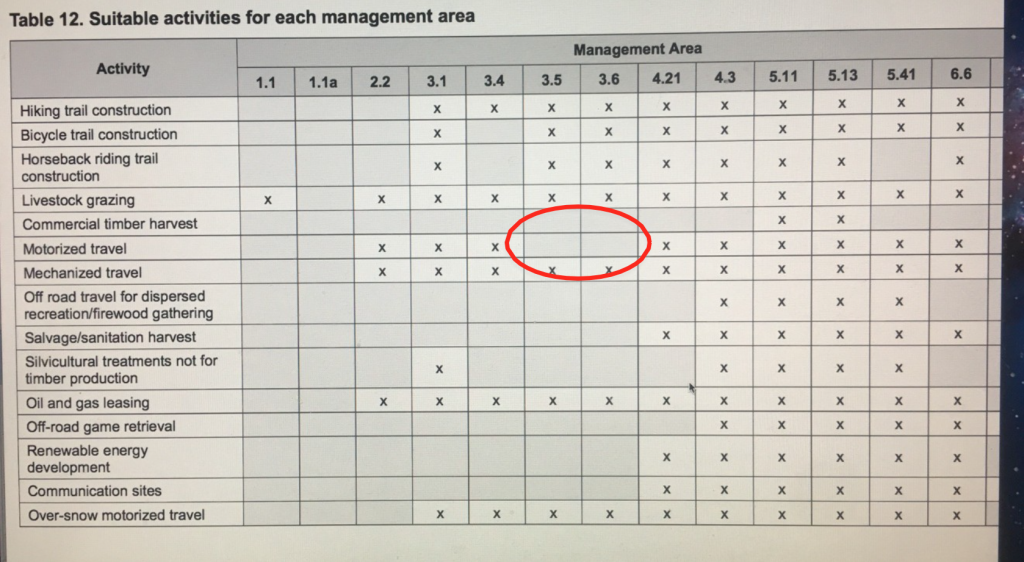Dan Dallas
Forest Supervisor
Rio Grande National Forest 1803 W. Highway 160
Monte Vista, CO 81144
Rio Grande National Forest, Forest Plan Revision Comments
Dear Supervisor Dallas:
Please accept these comments on behalf of the Trails Preservation Alliance (“TPA”) and the Colorado Off-Highway Vehicle Coalition (“COHVCO”). The TPA is a volunteer organization created to be a viable partner to public lands managers, working with the United States Forest Service (USFS) and the Bureau of Land Management (BLM) to preserve the sport of trail riding and multiple-use recreation. The TPA acts as an advocate for the sport and takes the necessary action to ensure that the USFS and BLM allocate a fair and equitable percentage of public lands access to diverse trail multi-use recreational opportunities. COHVCO is a grassroots advocacy organization representing approximately 170,000 registered off-highway vehicle (“OHV”), snowmobile and 4WD users in Colorado seeking to represent, assist, educate, and empower all motorized recreationists in the protection and promotion of multi-use and off-highway motorized recreation throughout Colorado. COHVCO is an environmental organization that advocates and promotes the responsible use and conservation of our public lands and natural resources to preserve their aesthetic and recreational qualities for future generations. TPA and COHVCO are referred to collectively in this correspondence as “the Organizations”. The Organizations offer the following comments and suggestions regarding the ongoing Rio Grande National Forest Plan Revision and the associated Draft Environmental Impact Statement.
The Organizations have reviewed the most current versions of the Forest Plan Revision documents and have identified the following issues:
- Draft Forest Plan, page 91, Table 12. Suitable activities for each management area. Management Areas 5 and 3.6 are open to Motorized Travel on designated routes, therefore the corresponding boxes in Table 12 need to be checked/annotated to reflect this suitability.

- Draft Forest Plan, page 84, Proposed Management Area 3.6-Upper Tier Colorado Roadless Area. Wording correctly recognizes motorized travel on designated routes within Roadless Areas as a recreational opportunity. Newly established Management Areas (MAs) 3.5 and 3.6 are Roadless Areas, thus it is critical that Forest Service wording remain consistent to identify motorized use’s place within these However, as described in the Draft Environmental Impact Statement (DEIS) on page 274, there is misleading wording regarding motorized recreational opportunities within “Colorado Roadless Areas.” “Motorized vehicle use is currently limited to designated routes outside wilderness or Colorado roadless areas. Motorized use is also prohibited in some eligible wild, scenic, and recreational river segments and research natural areas.” Motorized use is indeed allowed on designated routes within Roadless Areas so the current wording is conflicting.
- DEIS Alternative B. The Desired Summer Recreation Opportunity Spectrum (ROS) map is far too limiting for both the motorized community and land managers in terms of areas identified as Semi-Primitive Non-Motorized. The ROS Semi-Primitive Non-Motorized spectrum are areas for “non-motorized exploration” and are “managed for non-motorized use” according to Forest Service definition. The proposed Alternative B map has too many areas identified as Semi-Primitive Non- Motorized and the map is almost identical to the existing 1996 Forest Plan ROS map. If this map were to become final and approved, motorized trail opportunities will be fragmented. The new Forest Plan is supposed to be more flexible for land managers, the Alternative B map will not provide or allow for an increase in flexibility. Land managers seeking to utilize Adaptive Management after Monitoring will have their options limited by this map as depicted in Alternative B. Protecting management flexibility will be critical to accomplish Adaptive Management Alternative C, ROS map is much more reasonable and flexible and will enable implementing options such as designating new motorized trails to be less restrictive for land managers. Guidance maps are useful, but if they are not well thought out or drawn wrong, they will limit future management. Similar to Habitat Fragmentation, the Organizations and the public do not want to see Trail Fragmentation. If initial guidance is too restrictive; alternatives for utilizing Adaptive Management will remain limited and too restrictive. Forest Service guidance, which certainly has an intent is to provide well thought out trails systems, compels having loops, connectivity and the ability to disperse trail user pressure from areas like the Continental Divide National Scenic Trail (CDNST). For example if most of the areas adjacent to the CDNST are in the ROS spectrum Semi-Primitive Non-Motorized this will limit future adaptive management flexibility and opportunities.
Thank you for your consideration of these comments. Together we hope to help develop a simpler, more useful and flexible Forest Plan for the RGNF that can be understood and embraced by the public.
Don Riggle
Director of Operations
Trails Preservation Alliance
Scott Jones, esq.
COHVCO Co-Chairman
CSA Vise President
Trails Preservation Alliance
cc The RGNF Forest Planning Team (rgnf_forest_plan@fs.fed.us)
